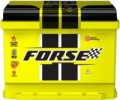—
Serviceable. Only classic lead-acid batteries (see "Type") are serviceable: they can be easily identified even externally by the presence of removable caps that provide access to the internal compartments with electrolyte. The latter is a mixture of sulfuric acid and water, and with each charge, some of this water "boils off" (breaks down into oxygen and hydrogen and evaporates). This occurs especially intensively during overcharging or charging at increased voltage. Battery maintenance consists of periodically replenishing the water supply in the electrolyte—without this, the decrease in its level leads to plate damage due to contact with air, which irreparably worsens the battery's characteristics. On average, maintenance needs to be carried out 1-2 times a year (15-20 thousand km mileage for a passenger car), and these periods usually coincide with scheduled maintenance. However, this value may vary depending on the characteristics of both the battery itself and its operation; more detailed information is usually contained in the instructions for specific models. "Refilling" should be done exclusively with distilled water, as even relatively small amounts of foreign impurities can damage the plates.
—
Maintenance-free. As the name suggests, such batteries do not require the maintenance described above; this is achieved by several methods, in particular by filling the electrolyte with a reserve f
...or the entire service life or using gel (see "Type"). Despite the obvious advantages due to ease of use, maintenance-free batteries have one drawback: they are much more sensitive to deep discharge (capacity decreases), and, accordingly, they are less tolerant of cold and long downtimes.In this case, polarity refers to the location of the terminals on the battery. Traditionally, it is named according to the location of the "+" terminal when looking at the battery from the front (or, in the case of side terminals, from the side closest to which they are located).
—
+ left. In relation to passenger cars, such polarity in the CIS countries is often called "direct" or "ours". At the same time, in trucks (see "Purpose") the situation is the opposite - the left "plus" is the European standard.
—
+ right. In passenger cars, the right "plus" is typical mainly for European models, for which this polarity in the CIS countries received the unofficial name "euro" or "reverse" (as opposed to the domestic "direct"). In batteries for trucks, everything is the other way around.
— + right/ + left. This marking means that this battery model is available with both right and left “plus” (see above), and you can choose the option depending on the car model.
Note that the above division into “direct” and “reverse” polarity is not absolute, and in any case, before purchasing a battery in your car, this parameter should be clarified separately.

